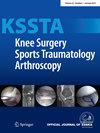Establishing ‘normal’ career longevity in professional footballers allows comparison to that of players with injuries and surgery
Abstract
Purpose
To determine the ‘normal’ career longevity of male professional footballers and the factors that affect this in order to provide a baseline against which career longevity after injury can be measured. To demonstrate how these results can be used by comparing them with published career longevity rates after anterior cruciate ligament reconstruction (ACLR).
Methods
Match play data for the entire careers of 4117 male footballers playing in the top four English football leagues between 1992 and 2023 was utilised. Players were grouped into ability levels and their “still playing” rates, and career trajectory tracked according to age. Univariate and multivariate analyses were used to determine differences by playing position and ability and Kaplan–Meier survival curves were generated. The findings were compared with published results after ACLR according to the comparable age and league level.
Results
Goalkeepers had a longer overall career length than outfield players (12.4 ± 4.9 vs. 11.6 ± 4.7 years, p = <0.01).Outfield players in the English Premier League (EPL) and those also playing internationally (EPL + I) play for longer overall and longer at their highest level (14.8 ± 3.3 and 7.5 ± 5.0 years) than lower league players (League 2: 6.2 ± 4.1 and 2.9 + 2.2 years). At 5 years, EPL + I and EPL outfield players have a 60% and 40% probability of continuing to play at their highest level respectively compared to less than 20% in The Championship and below. At 10 years this is 40% and 18% respectively compared to <2% in the lower leagues. 'Still playing' rates after ACLR are up to 12.9% lower than average for 30 year old footballers.
Conclusion
Career duration in footballers is affected by the position played and ability level. Career longevity and performance data is provided in a usable format for easy comparisons with studies reporting career longevity outcomes in professional footballers.
Level of Evidence
Level III, retrospective cohort study.






 求助内容:
求助内容: 应助结果提醒方式:
应助结果提醒方式:


